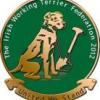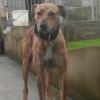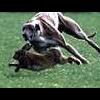-
Content Count
440 -
Joined
-
Last visited
-
Days Won
2
p3d last won the day on July 7 2017
p3d had the most liked content!
Community Reputation
879 ExcellentAbout p3d

-
Rank
Mega Hunter
- Birthday 19/12/1960
Profile Information
-
Gender
Male
-
Location
Ireland.
-
Interests
Working terriers
Recent Profile Visitors
2,252 profile views
-
Condolences to the Allen family on this terrible loss. Jerry Allen was one of the best dog men I ever had the pleasure to meet. Not only was he knowledgeable about every aspect of Strong dogs, Hounds and working terriers but he was more than generous with his time to discuss and educate anyone who he met. In Cork City Jerry was respected by all. His hounds and terriers made their mark and his sons are carrying on the great traditions that he fostered. The White terrier line owes a lot to his intelligence and care in the way he bred and worked them. Jerry joined the I.W
-
They may have been crossed a long time a ago but the Northern terrier goes back further than any breed that the Irish developed. The Wheaten, Kerry and Glen are the same dog, just separated for coat colour and a dwarf gene in the Glens. Even early photographs show a dog that was too big to go to ground. The names are made up, there was never any terrier bred in the Glen of Imaal. The Irish terrier we can see in early photographs and documents was a very small dog, around 6lb to 12 lb. Yorkshire terrier size. If really game then a handy digging dog. The Show people bred in a Welsh ter
-
Two excellent photographs, the Irish terrier from 1900 could easily pass for a working dog today. Pity the show crowd destroyed them.
-
Could be, if you look at the dog "Tinkers Double" it has a square head like that.
-
RH, No, we are no clearer. There are men who have a good understanding of what happened. One guy is writing a book, it should shed light on that time, 1950 to 1990. Hopefully it will get published soon.
-
Carlisle Otter Hounds1880, couple of white terriers in front. Peter Hills, an 1870s Yorkshire gamekeeper (Anyones guess what is in that white terrier) Early Staff, 1910, if you shaved a Wheaton/Kerry they have a head like this. Tinkers Double, An early Sealyham.
-
RH, Some early photographs with Black terriers, Before 1930 above. Dobson on the left. Kendlal Otterhounds 1930 Spartacus, Great Grandson of Smithy who was born 1972 so this must late 70's , maybe 76-78 Note Gould calls them all Black Fell types.
-
Well said, no one really knows what was outcrossed several generations back, never mind 100 years. No matter what the colour if they work is all that matters. (But we can still have some craic ribbing each other..)
-

Throwback... 1919 or 2019
p3d replied to Northumberlandkeeper's topic in Earthdogs & Working Terriers
Nice looking dog. -
Thats what I think as well. Cant see how this type would create Dobson’s Topsy. That Bedlington photo is about 30 years before the Topsy photo. This is the advantage of photographs. If we can get our hands on them they give us a good idea of how the strains developed. One question jumps out of the Dobson photos. Why did they need to bring in White terriers from the South?
-
We will have to come up with a new name for the smooth black dogs. How about a Nuttall terrier. Only joking, I thought the general view was that the smooth blacks were Patterdale and the wire haired were Fell. Correct me If I am wrong.
-
A very old photograph of a Bedlington, the man is Joseph Aynsley, a stonemason who is credited as the founder of the breed. Compare the size of his stonemasons hand with the head of the dog on the right. That is some lump of a dog, a wide skull with a pronounced stop.
-
RH, But check out the photograph of the "Patterdale Terrier" that he is referring to. Not a smooth black dog, the complete opposite.
-
I agree, an earlier version when they were small enough to work otter. John Edwardes favourite Dusty, in 1880 with her coat stripped.
-
The great things about old photographs is they can be used to trace a terrier line as it develops (or not). Arguably the best known of the Coniston huntsmen, Anthony Chapman began as whipper-in to Ernie Parker in 1932 and became huntsman from 1944 to 1976 when he retired. This photograph shows "Chappie" in later years so the date must be around the 70's. Two things to note, the white terrier and the Slate coated "Parks style terrier" on the couples. More white terriers smooth and wire-haired at Porters feet with the E&E 1906. If Topsy






